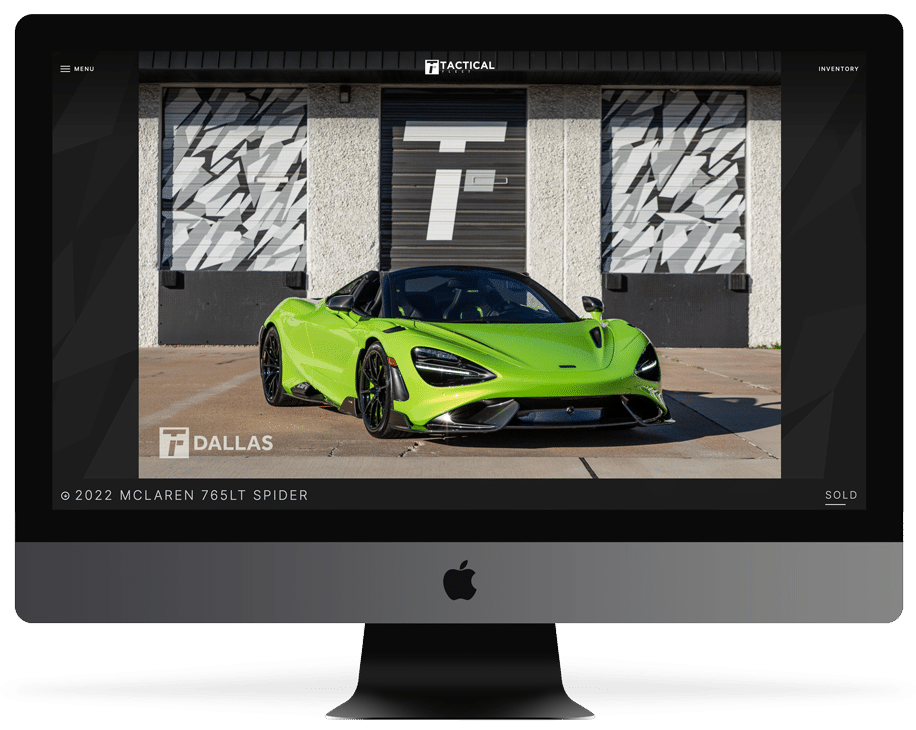In today’s fast-paced digital world, website speed optimization isn’t just a technical concern—it’s a business necessity. The speed at which your site loads directly affects everything from user experience and bounce rates to SEO rankings and overall revenue. Yet, many businesses still underestimate the financial impact of slow site performance.
At Think Cre8tive, we believe speed is strategy. Whether you’re running an e-commerce store, service-based website, or B2B platform, a slow-loading site can mean the difference between gaining a customer or losing one to a faster competitor.
In this guide, we’ll explore why website speed optimization is critical, how it influences your revenue, and what actionable steps you can take to ensure your website performs at peak levels.
The Modern Web: Where Speed Meets Expectation
Today’s users have zero patience for sluggish websites. Research consistently shows that every second counts—literally.
- 47% of consumers expect a page to load in two seconds or less.
- 40% of users will abandon a site that takes longer than three seconds to load.
- A one-second delay in page response can lead to a 7% reduction in conversions.
That means if your site generates $100,000 per day, a one-second delay could cost you over $2.5 million per year in lost sales.
This isn’t just about convenience—it’s about user psychology. In a world of instant gratification, a slow site feels like a broken promise. Visitors associate lagging performance with poor service quality, even if your products or offerings are world-class.
The Business Impact of Site Speed
Site speed directly influences key business metrics that determine success. Here’s how:
1. User Experience (UX)
Your website’s user experience begins the moment someone lands on it. A fast, seamless experience builds trust, while delays create frustration.
- Positive UX = higher engagement. Fast websites encourage users to explore more pages and stay longer.
- Poor UX = lost opportunities. Slow sites increase bounce rates and lower dwell time, hurting engagement metrics.
Think of speed as your first impression—it sets the tone for how users perceive your brand.
2. Conversion Rates
Speed directly correlates with conversions. Studies show that improving load times by just one second can increase conversions by up to 20%.
- E-commerce shoppers expect instant responsiveness.
- Service-based customers want smooth form submissions and checkout experiences.
- B2B buyers are more likely to engage with a site that feels professional and efficient.
Faster sites convert better—period.
3. SEO Rankings
Google made site speed an official ranking factor years ago, and it’s only become more important with updates like Core Web Vitals.
Search engines measure how quickly pages load, how stable they are visually, and how soon they become interactive. A slow site can sink even the best-optimized content.
Website speed optimization isn’t just for user experience—it’s essential for SEO visibility.
4. Ad Performance
If you’re running paid ads, slow websites waste money. When users click on an ad and the landing page loads slowly, most leave before it even finishes. That’s wasted ad spend and a higher cost per acquisition (CPA).
Optimized landing pages ensure every ad dollar goes further, delivering faster returns on investment.
Why Websites Slow Down
Understanding what slows your website down is the first step to fixing it.
1. Unoptimized Images
Large, uncompressed images are one of the top culprits for slow page speed. Every extra megabyte makes your site load slower—especially on mobile devices.
2. Excessive Scripts and Plugins
Plugins, tracking codes, and third-party scripts add functionality but can bog down performance. Many websites unknowingly carry redundant or outdated scripts that delay loading times.
3. Poor Hosting
Shared or low-quality hosting services can limit server response times. The cheaper the hosting, the slower the delivery.
4. Lack of Caching
Without caching, browsers must load every element from scratch each time a page is visited. Caching stores parts of your site locally, dramatically speeding up repeat visits.
5. Bloated Code
Messy HTML, CSS, or JavaScript can create unnecessary load on browsers. Clean, efficient coding keeps websites running smoothly.
How Think Cre8tive Approaches Website Speed Optimization
At Think Cre8tive, we integrate performance optimization into every site build from day one. Speed isn’t an afterthought—it’s a foundational element of your website’s design and development process.
Here’s how we do it:
1. Performance-First Development
We use lightweight frameworks and clean, efficient code to ensure your website loads fast on any device. Our developers prioritize responsiveness and accessibility without compromising visual appeal.
2. Advanced Caching Strategies
We implement both browser and server-side caching to reduce load times and improve performance for returning users.
3. Image and Media Optimization
Our team optimizes every image and video for web use, balancing quality and file size to create a seamless visual experience.
4. Content Delivery Network (CDN) Integration
By leveraging CDNs, we ensure your website content is delivered from the closest server to the user—speeding up delivery times globally.
5. Code Minification and Compression
We compress files and minify CSS and JavaScript to eliminate excess data, allowing pages to load faster and more efficiently.
6. Hosting and Server Optimization
We partner with top-tier hosting providers to ensure reliable uptime, rapid response, and scalable performance even during traffic spikes.
The Connection Between Speed and Scalability
A fast website doesn’t just perform better—it scales better. As your traffic grows, optimized infrastructure ensures consistent performance.
- Scalable architecture: A well-optimized website can handle increased users without slowing down.
- Reduced server costs: Faster, lighter sites use fewer resources, lowering hosting and maintenance costs.
- Future-proof design: Performance-focused builds remain compatible with evolving technologies and SEO standards.
At Think Cre8tive, we future-proof every project so your business stays competitive as the digital landscape evolves.
The Psychology of Speed: Why Users Expect Instant Results
Speed shapes perception. A fast site feels modern, trustworthy, and professional. A slow one feels outdated and unreliable.
When users experience lag:
- Their attention drops sharply.
- They question the credibility of your brand.
- They’re less likely to complete a purchase or form submission.
In contrast, a site that loads instantly creates confidence, making visitors feel their time is respected.
In short, speed builds trust—and trust drives sales.
How Site Speed Impacts SEO and Core Web Vitals
Google’s Core Web Vitals measure three key aspects of your website’s user experience:
- Largest Contentful Paint (LCP): How long it takes the main content to load.
- First Input Delay (FID): How quickly your site responds to user interactions.
- Cumulative Layout Shift (CLS): How stable your visual elements are as the page loads.
A poor score in any of these areas can hurt your rankings and visibility.
Optimizing for Core Web Vitals isn’t optional—it’s essential for maintaining SEO performance. Think Cre8tive ensures your website passes Google’s benchmarks, keeping you competitive in search results.
Measuring the ROI of Website Speed
Site speed directly impacts revenue, but how can you measure it?
Key performance indicators include:
- Bounce rate reduction
- Increase in pages per session
- Higher conversion rates
- Improved SEO rankings
- Enhanced customer satisfaction scores
By tracking these metrics before and after implementing website speed optimization, you can quantify its business value.
For example:
- Reducing load time from 5 seconds to 2 seconds can increase conversions by 25% or more.
- Improved SEO rankings can bring in thousands of dollars in additional organic traffic value each month.
Fast websites don’t just look better—they perform better financially.
Real-World Example: The Think Cre8tive Difference
When a Dallas-based home services company partnered with Think Cre8tive, they faced high bounce rates and poor conversion metrics due to slow site performance.
After a full website speed optimization overhaul, including CDN integration and media compression:
- Page load time dropped from 6.8 seconds to 1.9 seconds.
- Bounce rate decreased by 32%.
- Lead conversions increased by 48% in the first month.
The result? A faster, more profitable website experience that positioned them ahead of competitors.
How to Test and Improve Your Website Speed
If you’re unsure how your site is performing, start with free tools like:
- Google PageSpeed Insights
- GTmetrix
- Pingdom Website Speed Test
These tools highlight key performance issues, including server delays, unoptimized images, and slow-loading scripts.
Quick fixes include:
- Compressing images using tools like TinyPNG or Squoosh
- Enabling browser caching
- Using a reliable CDN
- Removing unnecessary plugins or scripts
- Minifying CSS and JavaScript files
For best results, pair these technical adjustments with strategic design and hosting improvements guided by professionals like Think Cre8tive.
The Future of Website Performance
As technology evolves, website speed optimization will only grow more critical.
- AI-driven performance monitoring will automate optimization suggestions.
- 5G networks will raise user expectations for instant loading.
- Voice search and mobile-first indexing will prioritize sites that deliver rapid responses.
In short, future-ready websites will need to be not just visually compelling but lightning-fast, scalable, and intelligent.
Think Cre8tive is already ahead of the curve—integrating speed and scalability into every build to ensure our clients are ready for what’s next.
Conclusion: Speed is the New Competitive Advantage
In the digital age, speed isn’t a luxury—it’s a necessity. From improving user experience to boosting SEO and driving conversions, website speed optimization impacts every aspect of your business’s success.
A fast website:
- Builds trust and credibility
- Enhances search visibility
- Increases conversions
- Strengthens customer loyalty
- Maximizes revenue potential
At Think Cre8tive, we design and develop websites engineered for performance, ensuring every visitor’s experience is fast, smooth, and memorable.
Ready to Win with Speed?
Don’t let a slow website hold your business back. Partner with Think Cre8tive to create a high-performing digital experience that drives real results.
Visit ThinkCre8tive.com to schedule your consultation today.
Boost your site speed. Increase your revenue. Elevate your brand.
Photo by NATHAN MULLET on Unsplash




Recent Comments